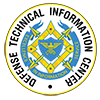Army to Modernize and Merge Capabilities of Arrow UAS and Lighter-Than-Air Persistent Surveillance System
The US Army intends to award North Eastern Aeronautical Company (NEANY) Inc. a USD49.2 million sole-source contract to modernise and merge the capabilities of the company”s Arrow unmanned aircraft system (UAS) with the service”s lighter-than-air (LTA) Persistent Surveillance System (PSS). The Justification and Approval (J&A) for the contract, which was posted on the Federal Business













